Alaska: America’s Last Frontier
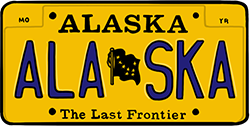
My wife and I recently took a long road trip through Alaska–1500 miles in a rental car (4 x 4) over two weeks. We had a great time, saw a lot of wildlife and beautiful scenery, and hiked in Denali and the Kenai Peninsula. The best part was the people we met, who were invariably friendly, down-to-earth, and just plain normal. In my home town of Austin, “normal” is in short supply these days. Here are my reflections on Alaska. A slightly revised version of this appeared in Law and Liberty on August 2, 2018. A response from a couple of Alaskan college professors followed here.

Alaska is the antithesis of hipster mecca Austin–in a good way
When University of Wisconsin historian Frederick Jackson Turner wrote his famous essay in 1893, “The Significance of the Frontier in American History,” he was not thinking of Alaska. Yet the 49th state—whose license plates proclaim it to be “The Last Frontier”—represents a still-untamed wilderness. Turner’s influential paper was prompted by the settlement (or, in the estimation of the 1890 census, the “closing”) of the West following the end of the Civil War. In Turner’s once-dominant view, conquering the American frontier required settlers to abandon European attitudes and customs and to embrace self-reliance, democracy, and freedom. A recent visit to Alaska inspired me to reflect on Turner’s now-controversial thesis that the existence of the American frontier shaped our national character in important respects.
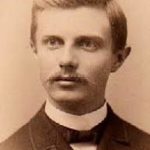
First, a bit of history. The United States acquired Alaska by purchase (from Russia) in 1867 for the modest sum of $7 million, after fur trappers had nearly decimated the population of sea otters—the chief resource Russian traders were interested in exploiting. While American critics initially derided the deal as “Seward’s Folly” (William H. Seward was Secretary of State at the time), the transaction was quickly vindicated by the discovery of gold. The non-contiguous territory was not a frozen wasteland, after all. The state’s productive fishery, abundant timber, coal reserves, and the eventual discovery of oil have long sustained the Alaskan economy—along with tourism in recent years.
In World War II, Alaska became strategically important for military purposes, due to the 1,200-mile long Aleutian Islands’ projection deep into the Pacific Ocean. In 1942, the Japanese invaded the archipelago and held the islands of Attu and Kiska for nearly a year—the first occupation of American territory by a foreign country since the War of 1812. Alaska was admitted to the union in 1959, and continues to host large Army and Air Force bases.
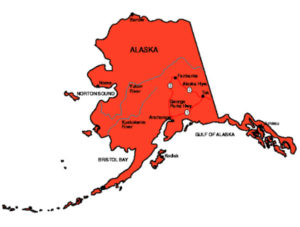
Alaska is vast, almost beyond comprehension. The state, at 663,268 square miles in size, is more than twice as big as the next-largest state, Texas. Alaska is one-fifth the size of the entire Lower 48 states, combined. The enormity of the state is accentuated by its mountainous terrain (including the 10 tallest peaks in the U.S., led by Mount McKinley at 20,310 feet [1]), extensive ocean coastline (more than all the other states combined), and frigid climate. Approximately five percent of Alaska’s land mass is covered by nearly 100,000 glaciers, the largest concentration of glaciers in the U.S.
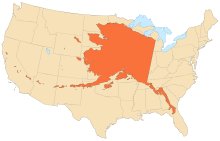
Because of its remote location and sprawling, largely-inaccessible land area, Alaska is sparsely populated. There are few roads and many areas of the state can only be reached by plane. More than 80 percent of communities in Alaska are not connected to a highway or road system. (Bush planes are common; the state has six times as many pilots per capita than the rest of the country.) Even the state capital, Juneau, can only be reached by boat or plane. Around 700,000 people inhabit the state, half of whom live in Anchorage. (Only Wyoming and Vermont have fewer residents.) Alaska is by far the least-densely populated state in the nation, and about half the residents live in small towns or rural areas.

Alaska residents are hardy souls, braving harsh weather, poor roads, geographic isolation, higher prices for most commodities, limited shopping and entertainment, and, in the summer months, nearly-constant daylight (due to the tilt in the earth’s axis). During long winters, they endure corresponding darkness. Alaskans also enjoy spectacular scenery, clean air, excellent hunting and fishing, and close proximity to unspoiled nature. In the early years, Alaska attracted mainly prospectors, fur trappers, miners, and mountain men willing (and able) to survive the grueling conditions. Later, a small number of adventurous homesteaders were drawn by cheap land and—in some areas—fertile soil. (In the Matanuska-Susitna Valley north of Anchorage, rich deposits of glacial silt—combined with extended summer sunshine—produce record-sized fruits and vegetables, such as 138-pound cabbages, 65-pound cantaloupes, and 35-pound broccolis.)
In 1935, New Deal architect Rexford Tugwell conceived a bold scheme to “rehabilitate” failed farmers in impoverished areas of the U.S. by relocating them to centrally-planned “cooperative” communities designed and built by the federal government. The largest example of this utopian agricultural experiment, involving the resettlement of over 200 distressed families from Michigan, Minnesota, and Wisconsin, was the Matanuska Colony Project in Palmer, Alaska. Although the “colony” was a massive failure as a relief program—exceeding its budget five-fold and losing more than half of the original colonists within five years [2]—it is a useful lesson in the futility of government-managed collective enterprises. In addition, the project helped develop the still-charming town of Palmer, which has preserved the site of the colony experiment as a historic district. [3]
Homesteading increased after World War II, especially in the Kenai Peninsula, and in recent decades many people seeking refuge from congestion, over-development, and over-regulation elsewhere have relocated to Alaska. Although the cross-section of residents I encountered during my visit was limited and not necessarily representative, I was struck by the consistency of their perspective. Alaskans, regardless of age, sex, or marital status, savor their solitude and wish to be “left alone.” They were also unfailingly friendly, unpretentious, and seemingly well-adjusted. It takes a special breed to tolerate the hardships of Alaska life, which include perils of nature not present elsewhere—such as numerous active volcanoes, frequent (and sometimes severe) earthquakes [4], the risk of tsunamis in coastal areas, avalanches, bear attacks, and the risk of hypothermia from exposure to omnipresent cold water.
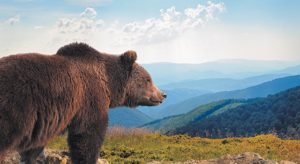
These challenges seem to shape (or attract?) certain attitudes and characteristics on the part of Alaska residents—such as independence and the desire for personal freedom. Turner’s frontier thesis is arguably borne out by the unique nature of Alaskan politics: marijuana sale and use are legal; Alaska has no state income tax (a feature universally touted by residents with whom I spoke); Alaska has no helmet laws for motorcycles or snowmobiles; Alaska has the highest rate of gun ownership in the nation (as well as all-terrain vehicles), and of snowmobile fatalities per capita; Alaska is the only state in the union without an ABA-approved law school; the state has the smallest bicameral legislature in the country, which meets only 90 days a year; and Alaska has a consistently-conservative voting record.
Alaska has voted Republican in every presidential election since 1968; since its statehood in 1959, Alaska voted for the Democratic candidate only once, for President Lyndon B. Johnson in the landslide election of 1964. Alaska voters, while conservative, are not necessarily partisan. In the 2016 presidential election, Alaska voters favored Donald Trump over Hillary Clinton by nearly 15 percentage points, but also cast six percent of their votes for Libertarian Party candidate Gary Johnson.
Third parties and independents have historically done well in Alaska. Republican Senator Lisa Murkowski, who was appointed by her father (Frank Murkowski) to his former seat upon his election as governor in 2002, won re-election in 2010 as a write-in candidate [5], after losing the Republican nomination to a Tea Party-backed challenger in the primary. Due to third-party candidates on the ballot, Murkowski is the first person in history to win three elections to the U.S. Senate (in 2004, 2010, and 2016) with pluralities but not majorities.
Are Alaskans different because of self-selection, or has the wilderness experience shaped their distinctive, can-do ethos? Or is it a combination of the two? I can’t really say. One thing is sure: Down-to-earth Alaskans are as unique as the “last frontier” in which they live. After returning to the progressive—but warmer–climate of my home town (Austin, Texas), I already miss it.

[1] Under the Obama Administration, in 2015 the Department of Interior renamed Mt. McKinley (so named since 1896) “Denali,” based on the native Athabaskans’ name for the peak. Because most of the Alaskans I met during my visit continue to refer to the mountain as “Mt. McKinley,” I adopt that usage.
[2] By 1965, only 20 of the first families were still farming in the Mat-Su Valley.
[3] An informative overview is Helen Hegener’s self-published 2014 book “The 1935 Matanuska Colony Project: The Remarkable History of a New Deal Experiment in Alaska.”
[4] In 1964, Alaska experienced the most powerful earthquake in North American history (measuring 9.2 on the Richter scale), which was also the second-most powerful earthquake recorded in human history.
[5] Murkowski became the first U.S. Senator to be elected in a write-in campaign since Strom Thurmond did so in South Carolina in 1954.
































